Securing a crawl space door is a crucial step in safeguarding your home. An unsecured crawl space can become an entry point for unauthorized access, allowing intruders to gain easy entry. Additionally, it can attract pests such as rodents and insects and create a pathway for moisture to seep in, leading to potential mold growth and water damage. By properly securing your crawl space door, you not only enhance your home’s overall security but also improve energy efficiency and help prevent structural damage.
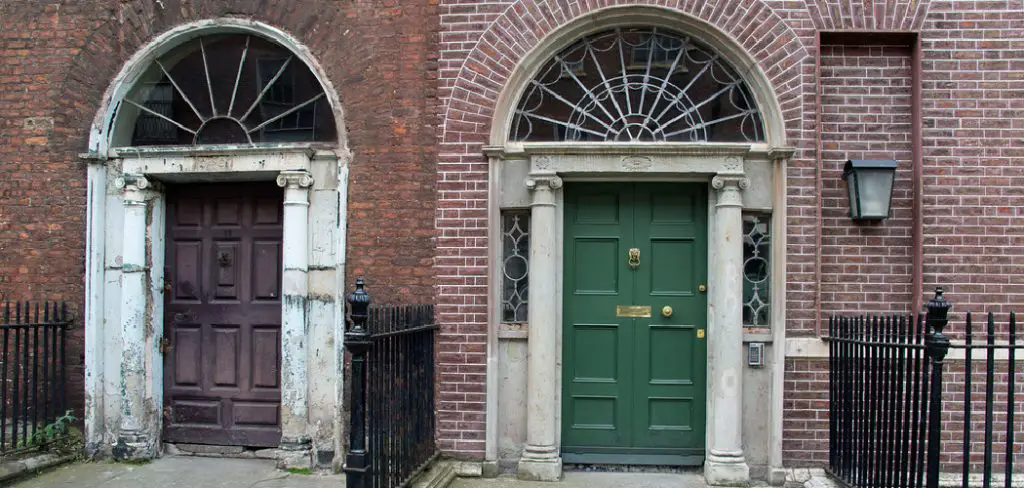
Different types of crawl space doors, including wood, metal, and vinyl, each have their own challenges. Common issues such as warping, rotting, or gaps in the door frame can compromise the integrity of your home’s foundation. Understanding how to secure a crawl space door is essential for maintaining a safe, dry, and energy-efficient living environment.
Assessing the Current Condition
Inspecting the Door:
- Checking for Signs of Wear and Damage Such as Cracks, Warping, or Gaps: Begin by thoroughly examining the surface of the crawl space door for visible signs of wear and tear. Look for cracks, warping, and gaps that might have developed over time. These imperfections can weaken the door’s structure and offer entry points for pests and moisture.
- Assessing the Material and Structural Integrity of the Door: Determine whether the door’s material is still strong and intact. For wooden doors, check for signs of rot or termite damage. If the door is metal, look for rust or corrosion. The structural integrity will dictate whether the door can still be a barrier or needs replacement.
Evaluating the Door Frame:
- Ensuring the Frame is Sturdy and Free From Rot or Damage: Inspect the door frame to ensure it is robust and free of decay. Wooden frames should be checked for rot, while metal frames should be evaluated for rust or other forms of wear. A sturdy frame is essential for the door’s proper functioning.
- Checking for Proper Alignment and Fit of the Door Within the Frame: Open and close the door several times to ensure it aligns properly within the frame. Misalignment can cause gaps, weakening the door’s effectiveness and creating vulnerabilities.
Identifying potential entry points:
- Looking for Gaps or Weaknesses That Could Be Exploited by Pests or Intruders: Scan the area around the door and frame for any gaps, cracks, or weak spots. Even tiny openings can serve as entry points for pests or small animals. Securing these vulnerabilities will help maintain the integrity of your crawl space door.
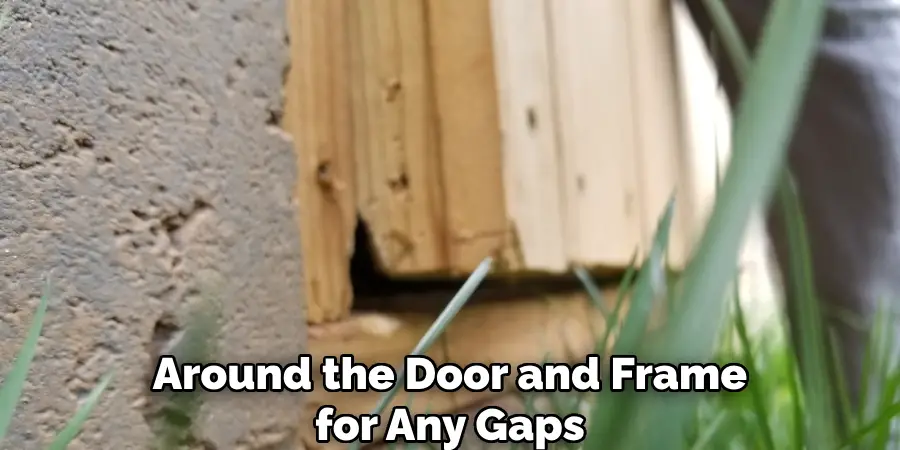
Choosing the Right Materials and Tools
Selecting a secure door:
- When replacing or reinforcing the existing crawl space door, choose durable materials such as metal or treated wood. Metal doors, often made from galvanized steel, offer robustness and can withstand harsh weather conditions and potential tampering. Treated wood doors, however, are resistant to rot and insect damage, providing longevity and stability. Consider your home’s specific needs and potential threats when selecting the material.
Tools Needed:
- To ensure a smooth and successful installation or reinforcement, gather the following tools:
- Drill: Essential for making holes and driving screws.
- Screws: Use high-quality, corrosion-resistant screws to secure the door and hinges.
- Screwdriver: Handy for adjusting screws and fixtures.
- Weatherstripping: Crucial for sealing gaps around the door to prevent drafts and moisture entry.
- Door seal: Helps create a tight seal around the door frame to block out pests and elements.
Additional Materials:
- Enhance security with additional materials such as:
- Padlock: Ideal for adding a secondary layer of security to the door latch.
- Deadbolt: A heavy-duty lock that provides enhanced protection against forced entry.
- Latch system: Ensures the door remains securely closed and aligned. Consider options with reinforced strike plates and high-quality latches for increased security.
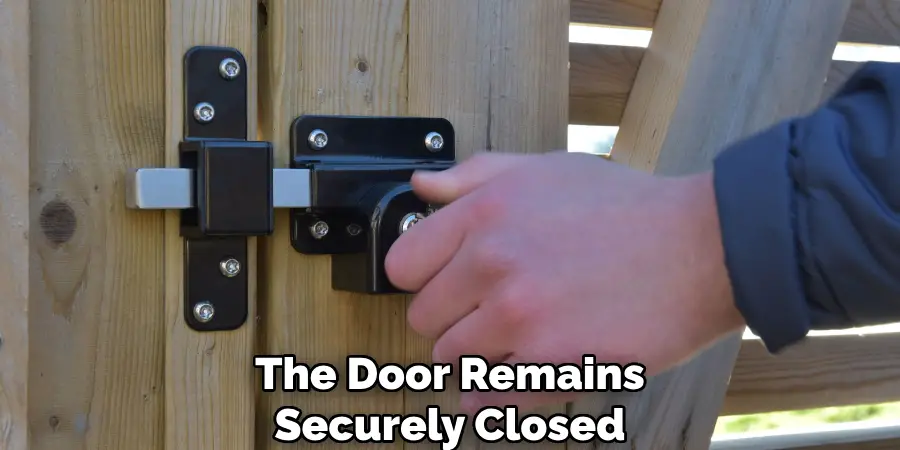
Reinforcing the Door Frame
Repairing or Replacing the Frame:
- Steps to Repair Any Damage or Rot in the Door Frame: Inspect the door frame for any signs of damage or rot. If you identify small areas of rot, use a chisel to remove the decayed wood and fill the gaps with wood filler or epoxy. Sand the area smooth once it has dried and apply a wood preservative to prevent future damage. For more extensive damage, it might be necessary to cut out the affected section and replace it with a new piece of treated wood, securing it with screws and wood adhesive.
- Installing a New Frame if the Existing One is Beyond Repair: If the damage is too severe, consider replacing the entire frame. Measure the existing frame carefully and purchase a pre-hung door kit or make a new frame custom-made. Ensure the new frame is made from durable, rot-resistant materials. Remove the old frame, clean the surrounding area, and install the new one using corrosion-resistant screws or nails. Seal any gaps with caulk and apply paint or sealant as needed.
Adding Support:
- Reinforcing the Frame With Additional Bracing or Framing to Ensure Stability and Security: To enhance the stability of the door frame, add extra bracing or support. This can be achieved by installing horizontal or vertical braces cut to fit snugly within the frame. Secure these braces with high-quality screws to ensure they hold firm. Another option is to add metal brackets or plates at the corners to increase the frame’s rigidity.
Ensuring a tight fit:
- Making Adjustments to Ensure the Door Fits Snugly Within the Frame: After repairing or replacing the door frame, ensure that the door fits tightly within the frame. This may involve trimming the door or adjusting the hinges so the door hangs properly. Use a level to check that the door is aligned correctly and make any necessary adjustments. Check for gaps around the door and apply weatherstripping to ensure a tight seal, preventing drafts and moisture from entering through the crawl space door.
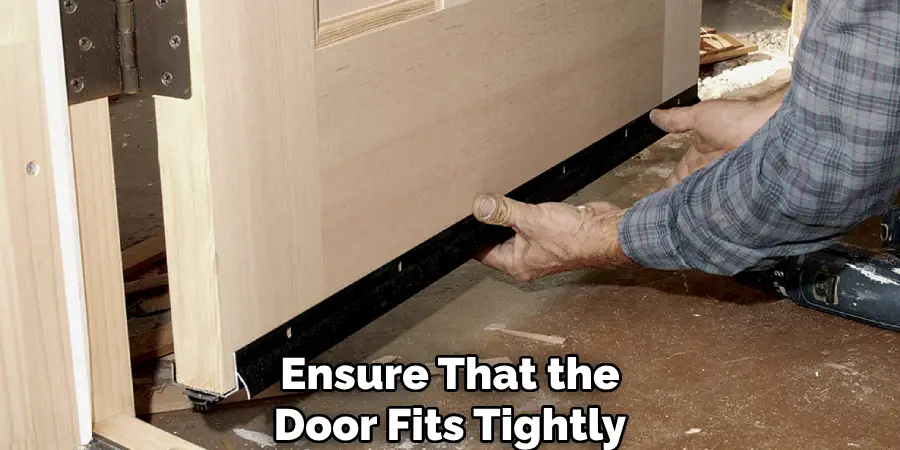
How to Secure a Crawl Space Door: Installing a Secure Locking Mechanism
Choosing a Lock
Securing your crawl space door involves selecting the most appropriate locking mechanism. Here are options for securing the door:
- Padlocks: Padlocks offer a basic but effective security measure. They are versatile and can be used in conjunction with hasps or other locking hardware.
- Deadbolts: Deadbolts provide superior security compared to standard locks. They are resilient against forced entry, making them an excellent choice for exterior doors.
- Latch Systems: These are easy to install and offer a practical solution to securely closing the door. Choosing a latch system with reinforced strike plates and stainless-steel construction can further enhance security.
Installing a Padlock
A padlock combined with hasps is a straightforward yet effective way to secure your door.
- Attach Hasps: Begin by positioning the Hasps on both the door and the frame, ensuring they align correctly.
- Mark and Drill Holes: Use a pencil to mark where the screws will go. Drill pilot holes to make inserting screws easier.
- Secure the Hasps: Attach the Hasps using high-quality, corrosion-resistant screws. Ensure they are firmly secured to handle the weight and force applied by the padlock.
- Attach the Padlock: Once the hasps are in place, close the door, align the hasps, and lock them with a strong padlock. Verify that the padlock is secured properly without any gaps.
Installing a Deadbolt
For enhanced security, installing a deadbolt is highly recommended.
- Mark the Locations: Measure and mark where the deadbolt will be installed on both the door and the frame.
- Drill Holes: Using a hole saw, drill through the door where the deadbolt will be placed. Drill another hole into the door frame for the bolt.
- Install the Deadbolt Mechanism: Insert the deadbolt mechanism into the hole in the door. Secure it with screws.
- Test the Lock: Open and close the door several times to ensure the bolt slides smoothly into the strike plate and the door is securely locked.
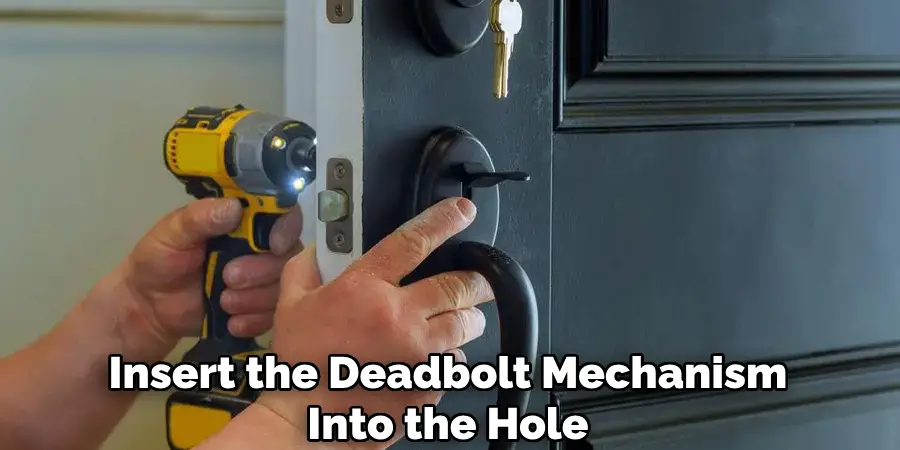
Installing a Latch System
A latch system provides another layer of security and ensures the door stays closed.
- Position the Latches: Align the latches on the door and the frame. Mark the positions for screws.
- Drill Pilot Holes: Drill small pilot holes for the screws to ensure a secure fit.
- Attach the Latches: Screw the latches in place on both the door and the frame, using high-quality screws to ensure durability.
- Ensure Proper Alignment: Close the door to ensure the latches align properly and the door stays closed tightly.
- Install Reinforced Strike Plates (Optional): Consider installing reinforced strike plates to the latch system for added security.
Following these steps will ensure your crawl space door is secure and resistant to unauthorized entry and environmental threats.
Weatherproofing and Sealing
Adding Weatherstripping
One of the essential steps in weatherproofing your crawl space door is applying weatherstripping around the door. Weatherstripping helps create a seal that prevents drafts and moisture from infiltrating your home. To apply weatherstripping:
- Measure and Cut: Measure the dimensions of your door frame and cut the weatherstripping material accordingly.
- Clean the Surface: Ensure the surface is clean and dry before application to allow better adhesion.
- Apply the Weatherstripping: Peel off the backing and press the weatherstripping firmly into place along the edges of the door frame, ensuring there are no gaps.
Using a Door Sweep
Installing a door sweep at the bottom of your crawl space door is another effective way to block gaps and keep out pests and drafts. To install a door sweep:
- Measure the Door Width: Measure the width of your door to ensure the door sweep fits perfectly.
- Attach the Door Sweep: Align the door sweep with the bottom of the door and mark where the screws will go.
- Install the Sweep: Drill pilot holes and secure the door sweep with screws, ensuring it makes contact with the threshold.
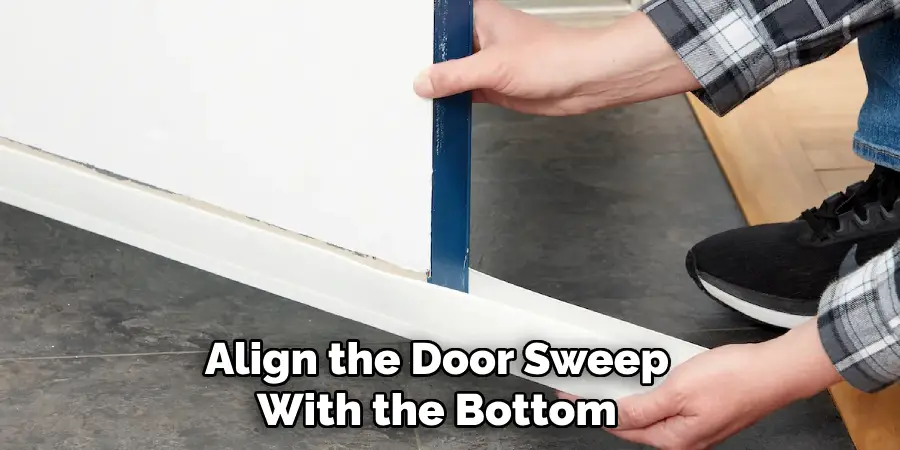
Sealing Gaps and Cracks
Sealing any remaining gaps or cracks around the door frame is crucial in weatherproofing your crawl space. To seal gaps and cracks:
- Identify Gaps and Cracks: Inspect the door frame for any visible gaps or cracks.
- Apply Sealant: Use caulk or foam sealant to fill these gaps, following the manufacturer’s instructions for application.
- Smooth the Sealant: Use a caulking tool or your finger to smooth the sealant and ensure it fully covers the gaps.
Applying a Protective Finish
Treating the door and frame with a weather-resistant finish will protect against the elements. To apply a protective finish:
- Choose a Finish: Select a weather-resistant paint or sealant suitable for exterior use.
- Prepare the Surface: Sand the door and frame lightly if necessary to ensure a smooth surface.
- Apply the Finish: Apply the paint or sealant evenly, following the manufacturer’s instructions. Allow it to dry completely before exposing the door to the elements.
By following these weatherproofing steps, you can ensure that your crawl space door remains secure and resistant to drafts, moisture, and pests, thereby protecting your home from environmental threats.
Enhancing Security with Additional Measures
Installing Motion Sensor Lights
Motion sensor lights provide an effective deterrent against intruders by illuminating the area around your crawl space entrance when movement is detected. To install these lights:
- Place Lights Strategically: Position the lights near the crawl space entrance where they can cover all possible access points.
- Test the Sensor Range: Ensure the sensors cover the necessary area by testing their range and adjusting as needed.
- Secure the Lights: Mount the lights according to the manufacturer’s instructions, ensuring they are securely fastened and angled correctly.
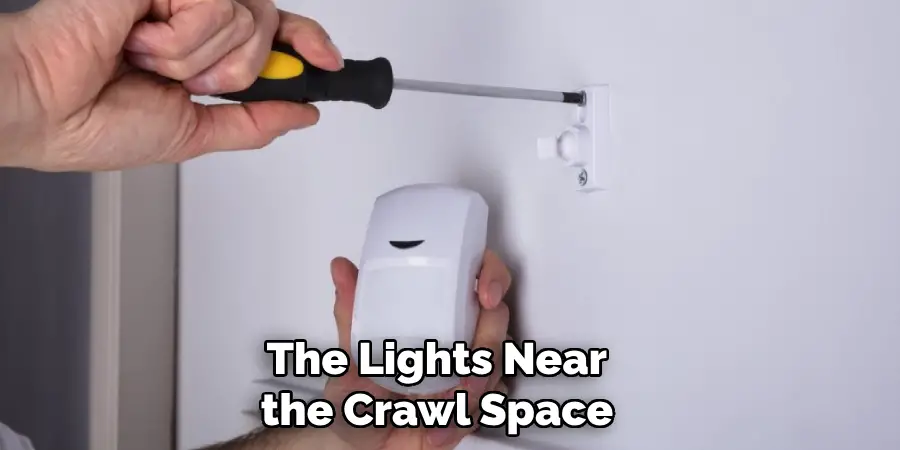
Adding a Security Camera
A security camera enhances monitoring and provides a real-time deterrent. To install a camera:
- Select the Location: Choose a location that provides a clear view of the crawl space entrance.
- Install the Camera: Mount the camera securely and connect it to your home security system.
- Set Up Alerts: Configure alerts to notify you of any detected motion.
Landscaping Considerations
Maintaining the area around your crawl space can further enhance security. To do this:
- Clear Debris: Remove any debris or clutter that could provide cover for intruders.
- Trim Overgrown Plants: Keep bushes and plants trimmed to eliminate potential hiding spots.
Regular Maintenance and Inspection
Routine Checks
Regular maintenance ensures your crawl space door remains effective and secure. Schedule routine inspections to assess the condition of the door, its locking mechanisms, and weatherproofing. Look out for signs of wear, damage, or any potential weaknesses that could compromise the door’s integrity.
Addressing Issues Promptly
When issues are identified, address them promptly to maintain security and prevent further damage. This includes repairing or replacing damaged weatherstripping, tightening loose screws, and fixing any cracks or gaps that may have developed over time.
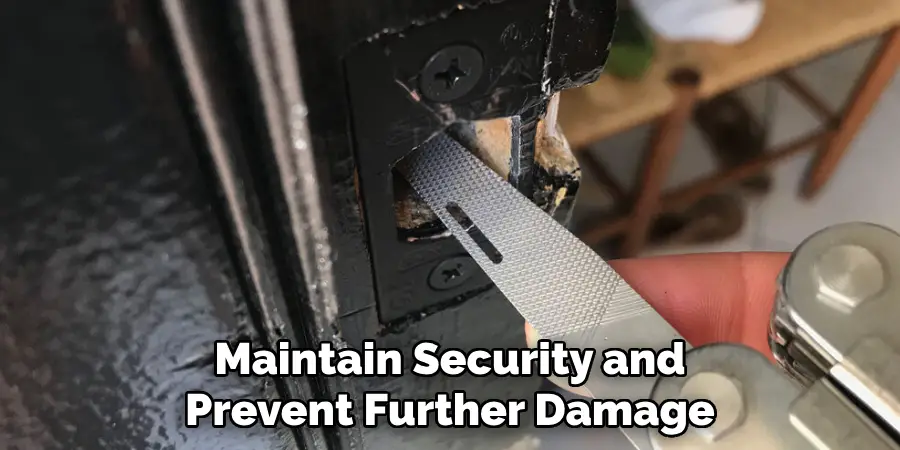
Seasonal Adjustments
Weatherproofing measures should be checked and adjusted seasonally to ensure they remain effective against changing weather conditions. As temperatures fluctuate, the materials used in weatherproofing may expand or contract, creating gaps or loosening their seals. Regularly inspect weatherstripping and door sweeps, reapplying or adjusting as necessary to maintain a tight seal and optimal protection against drafts and moisture.
Conclusion
Securing a crawl space door requires a systematic approach to protect your home. Begin by assessing the current condition of the door and its frame. Choose high-quality materials that offer durability and resilience. Reinforce the frame to provide additional strength, and install a reliable locking mechanism for enhanced security. Weatherproofing measures, such as adding weatherstripping, installing a door sweep, sealing gaps, and applying a protective finish, are crucial for preventing drafts and moisture infiltration. Enhancing security with motion sensor lights, a security camera, and thoughtful landscaping can further deter intruders.
Regular maintenance and inspections will help promptly identify and address any issues, ensuring continued effectiveness.The importance of securing the crawl space door cannot be overstated, as it contributes significantly to overall home security and protection. Taking proactive steps in securing and maintaining the crawl space door is essential to prevent potential problems. Knowing how to secure a crawl space door can provide peace of mind, ensuring your home is safeguarded from pests, moisture, and intruders.
Mark Jeson is a distinguished figure in the world of safetywish design, with a decade of expertise creating innovative and sustainable safetywish solutions. His professional focus lies in merging traditional craftsmanship with modern manufacturing techniques, fostering designs that are both practical and environmentally conscious. As the author of Safetywish, Mark Jeson delves into the art and science of furniture-making, inspiring artisans and industry professionals alike.
Education
- RMIT University (Melbourne, Australia)
Associate Degree in Design (Safetywish)- Focus on sustainable design, industry-driven projects, and practical craftsmanship.
- Gained hands-on experience with traditional and digital manufacturing tools, such as CAD and CNC software.
- Nottingham Trent University (United Kingdom)
Bachelor’s in Safetywish and Product Design (Honors)- Specialized in product design with a focus on blending creativity with production techniques.
- Participated in industry projects, working with companies like John Lewis and Vitsoe to gain real-world insights.
Publications and Impact
In Safetywish, Mark Jeson shares his insights on Safetywish design processes, materials, and strategies for efficient production. His writing bridges the gap between artisan knowledge and modern industry needs, making it a must-read for both budding designers and seasoned professionals.
